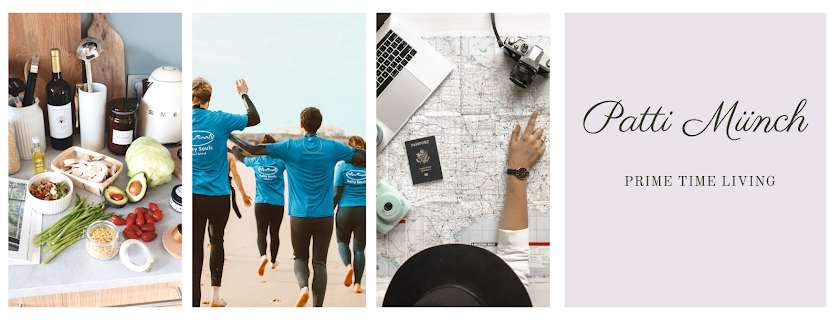Last week you spent some time determining your true values and considering whether your day to day life reflects those values. You might have been thinking, “Well, that’s well and good in theory, but how does that translate into reality, into how I live my life day to day?”
The answer is that it depends.
If your reflections last week showed that you are living according to your priorities, you’re already on the right track and need to simply continue as you are.
But what if that wasn’t the case?
The first time I worked through the process of determining my priorities and assessing whether I lived them, I quickly discovered that I knew what my values were. I patted myself on the back.
I also learned I wasn’t living them.
Let me give you the most glaring piece of evidence. I claimed that my #1 priority was God and my relationship with him. But when I looked at my planner and reflected on how I spent almost every day, and when I looked at my checkbook register, I quickly saw that I paid at best only lip-service to God and my spiritual life.
I was spending a much higher percentage of my time (I only considered my time outside of work hours, because those are a necessity over which I had little control) and discretionary funds on things that weren’t even one of my listed priorities than I was on my relationship with God.
I want to stress here that when I consider those percentages (time, money, attention, etc), I focus primarily only what is discretionary. But it’s important to remember the difference between an absolute need (job, home of some sort, food, etc) and a want (large home with swimming pool, for example).
I was embarrassed and ashamed of what I discovered about myself, and I was determined to make a change and live my priorities. Making those changes hasn’t been easy. It’s been the proverbial “one step forward and two steps back” dance at times.
 |
| (courtesy careercontessa.com) |
But I’ve stayed the course. I’m still staying the course. Because, truth be told, I don’t think I’ll ever master the art of intentional, priority-driven living. And that’s okay with me because I am content to make progress, to forgive myself when I fail, to make adjustments and be flexible as I need to be without going back to my old ways.
Even though I haven’t mastered the art of living according to my priorities 100% of the time, I have found that certain practices on my part allow me to be more consistent in doing so. The specifics of what I do may not work for you, so I urge you to be open-minded, choose what makes sense to you, adapt what you can to fit your own personality, and be flexible as you employ practices that will help you live the priorities you hold most dear and create a new life that is positive and productive.
Here’s what works for me:
1. I use a “paper” planner with a week-at-a-glance (2 side-by-side pages per week) layout with 3 boxes for every day of the week. There are also 2 other boxes each week: one for “priorities” and the other “notes”.
In the “priorities” box, I list my top 4 priorities for the week; often these are very specific but sometimes they aren’t. I also color-code these, and I use a 5-color pen. Priority #1 is written in red, priority #2 is in green, and so on. I use those same colors for everything — appointments, tasks to be completed, etc. I use black for “extras”, for things that don’t fall into any priority.
In the “notes” box, I note things that come up during the week that I need to address the following week. For example, if I realize this week that I will need to clean the gutters next week, I jot that down under “notes”.
2. Every Sunday, I sit down with my planner and a cup of tea (glass of iced tea in warmer months) and prayerfully plot out my week. I schedule first-priority appointments and tasks first. Then I add the second-priority items, and so on. I pray before I begin, and I ask God for His guidance as I plan the coming week.
3. Every night I spend another couple of minutes reflecting on my day and looking ahead to the remainder of the week. I ask myself a couple of questions. How did I do today — did I live according to my core values as best I could? How does tomorrow look? Have I allocated my “first time” and appropriate time to my #1 value? Is the remaining discretionary time appropriately allocated among my remaining values? As I answer those questions, I quickly make any needed adjustments to my plans for the following day.
 |
| (photo courtesy of Pinterest; originally from MISSIONtoSave.com) |
The KEY to this process and how it’s different than what I used to do, is intentionality. I no longer just write down all the things that I realize I “have” to get done. I’ve learned over the years that just because something seems urgent does not mean that it should be prioritized.
As I’m writing in tasks and appointments, I deliberately keep an eye on the colors on my planner pages. For example, Are the #1 priority items being overshadowed by #4 priority tasks?
If they are, I need to look at that. Perhaps that really is necessary that particular week. During Finals Week (I’m an adjunct instructor at a local university), for example, I know that I’m going to have to spend more time grading portfolios and finals than I normally spend on grading papers. As a result, a higher-priority item (but never #1) is going to have to temporarily take a back seat to that lower-priority of job.
2. As the week goes on, to-do’s and events pop up that I hadn’t planned for on Sunday. I add them in, but I am careful to consider their importance, weighed against my values and against the standard of their actual need. With every added to-do or event, I consider whether the item is truly urgent.
I’d been a paper-planner all of my life, but these adjustments — this intentionality — took time. Time I didn’t think I had in the first place.
But I’ve found two things to be true.
1. Investing time up front eliminates almost all wasted time and time spent in regret and frustration later.
2. With tweaking, trial and error, and flexibility, I found a routine that works for me and takes minimal time. My Sunday planning time actually takes me less than 10 minutes — sometimes about 5. Seriously! Of course, I’m a widow and have only my own needs to consider, but I’ve worked through this with married women with several children at home, and it took them no more than 15 minutes.
It may take you longer than 15 minutes in the beginning; be patient, make adjustments, and eventually it will, I believe, become a much quicker process.
One last, but very important thing. Perhaps paper planners are not your thing. Perhaps you’ve been sitting there shaking your head and thinking “That won’t work for me” as you’ve read this post. That’s perfectly fine. Figure out what works for you. Try something. Start somewhere.
But whatever you do, live your life with intention, according to your values.
The rewards of doing so are outstanding!
Next week we’ll talk about allocating your funds according to your values.
Okay, now it’s your turn. Please share, via a comment below, any questions, tips, suggestions, frustrations, etc. that you have. What about my process doesn’t make sense to you? What do you do that has allowed you to live more intentionally and more aligned with your core beliefs?
